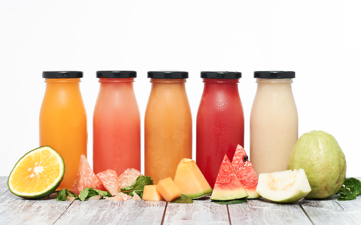
As is often the case in food manufacturing, food constituents can exert more than one function, and food cultures used to produce fermented foodstuffs are no exception. Fermentation is an ancient method to improve the organoleptic properties and texture of raw materials like milk, meat, or vegetables, rise bread dough or generate alcohol in our beloved beer or wine. Concomitantly, fermentation improves the stability of these foodstuffs. Not all applications of food cultures are visible to consumers, as they sometimes only affect stability but not the taste or texture of the foodstuffs. Many of the food cultures are so established that the long history of use in food or feed is accepted as proof of their safety.
Legal requirements under construction
Food improvement agents like food additives, food enzymes, and flavourings require an authorization by the EC through the harmonized procedure laid down in Regulation (EC) 1331/2008, whereas food cultures used in fermented products are nowadays unanimously regarded as ingredients and are subject to the provisions of the General Food Law (Regulation (EC) No 178/2002). To keep control and ensure food safety, some Member States advocate for the classification of certain food cultures as food additives under the EU Food Additives Regulation (Regulation (EC) No 1333/2008) when being used in innovative, more targeted applications, e.g., if used as protective cultures. Not all Member states share this position.
Emerging challenges for food made with food cultures
It is quite understandable that the industry worries about additional regulatory hurdles and fears losing innovative power. The issue seems limited to a specific type of application of food cultures, for which a pragmatic solution could be found; however, the lack of transparency and the resulting legal uncertainty with regards to food cultures is indeed a serious hurdle for food innovators. This becomes obvious if one tries to figure out whether and how certain cultures can be employed for the manufacture of innovative foodstuffs, not to mention national peculiarities.
It is striking that numerous applications for the use of microorganisms in feed production are currently being evaluated by EFSA, whereas not one application was submitted on food cultures for direct consumption in fermented foods. This observation is in stark contrast to the innovation taking place in supermarket shelves, especially in the vegetarian and vegan food sector. Are they all exclusively using established food cultures?
The solution – A common list of food cultures?
Without being directly involved in this conversation between the EC and the industry, there seems to be a lack of transparency from all parties involved. It must be hoped that stakeholders and EC find a common ground and can establish measures and rules that facilitate innovation, and avoid unnecessary bureaucracy while ensuring food safety. Why not think about a Union List of food cultures? We will keep you posted about this topic.
